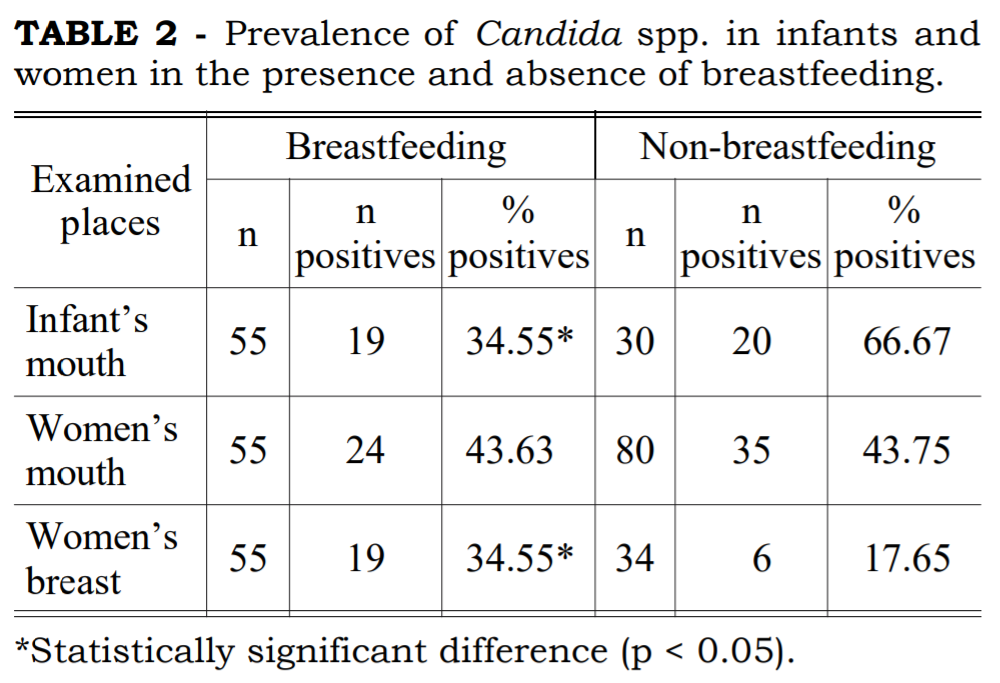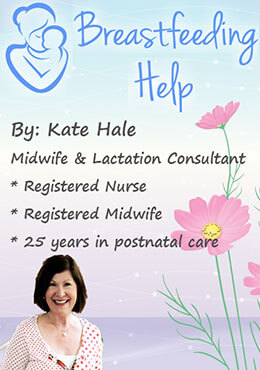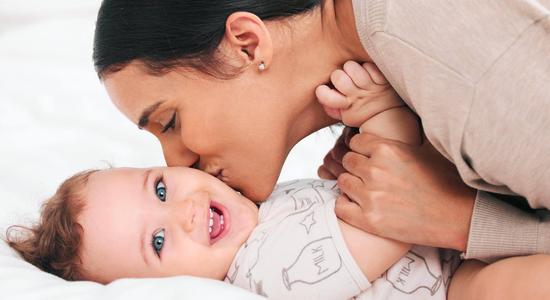See all "Breasts" Section Topics

There are several causes for an infection of the breast. Candida Hub has other articles, on common breast problems, that are explained briefly right below; those overviews may be more what you are looking for. If you do suspect you have thrush on the breast, you can use natural medicine to treat this condition. Most women, who develop thrush on the breast, will be breastfeeding or lactating at the time. Yet, such breast problems, can occur even if you're not lactating currently. The skin symptoms of a thrush infection of the breast will also be discussed in this article to assist you diagnosing your problem.
If you are breastfeeding, you may want to get some professional advice on how to breastfeed—if you’ve never been taught. Improper breastfeeding technique, can cause a lot of problems with the nipple and breast; thankfully, these are easy to remedy by correcting your technique. And, remember to avoid breastfeeding a child with oral thrush if you can. The yeast living in your baby’s mouth can easily colonize your nipple and breast when it comes into contact with these areas during feeding.
Thrush Under the Breast
![Pictured here is an infant with Candidal intertrigo of the skin folds. This particular case was cased by the species Candida albicans. If you have a yeast infection of the skin folds, it may have some white plaques that are a good indication of yeast causing the infection.<br>
Image Source: Torres-Alvarez, Bertha, et al.; Dermatology Online Journal [2013]](/img/Intertrigo.jpg)
Image Source: Torres-Alvarez, Bertha, et al.; Dermatology Online Journal [2013]
Candida Hub currently has a whole explanatory article on intertrigo and thrush under the breasts. If you are noticing a rash under your breast, and wondering if it is Candida causing the rash, chances are it is just intertrigo. Intertrigo is a rash / inflammation of the skin areas where skin rubs against skin. The under breast area is a prime location for this skin rash to develop; especially if you are a plus size woman. Any area, that skin folds over skin, is going to be a incubator for various fungi and bacteria—Candida included. Often, what starts out as intertrigo, turns into a yeast infection under the breasts. The inflammation of the skin is an open door for yeast to start growing on the damaged skin. There can also be a horrible smell when you get intertrigo with a yeast infection; something no one wants to have coming from their breasts! Fortunately, you can learn how to naturally cure this problem, and find out about some basic steps you can take to protect the skin under your breasts at this page: Yeast Infection Under the Breast.
A 1/2 Day & Yeast is Gone!
Linda Allen suffered from yeast infections for years. Through researching natural medicine & Candida, she found an efficacious solution!
Linda is one expert you want on your side! Let her show you how to get rid of a superficial yeast infection in just 12 hours; AND, keep it gone!
A 60-day, 100% money back guarantee is provided.
Visit Official Site!Thrush on the Nipple
The nipples are another prime area a breastfeeding mother can get thrush. Thrush on the nipples can cause oral thrush in a baby; and, the infection can repeatedly get passed back and forth between mother and child. Not all nipple pain is due to Candida though; and, if you are new to breastfeeding, your technique could be the primary reason why your nipples are hurting. An article on Candida Hub, points out what research has shown to be the most common causes for nipple pain, in breastfeeding moms. If you are showing the symptoms of thrush on your breast skin, and have some predisposing factors for this condition; thrush could be on your nipple. To find out about nipple pain and yeast infections in this area, you can learn more here: Nipple Yeast Infections.
Eliminate Bacterial Vaginosis & Vaginal Odor
Jennifer O’Brien is one prominent expert on BV that knows how to get rid of vaginal odor. BV is a common infection that you don’t have to put up with.
Jennifer will show you how to naturally eliminate vaginal odor in just 3 days.
A 60-day, 100% money back guarantee is provided.
Visit Official Site!Mastitis: Breast Infections

Mastitis, otherwise known as an infection of the breasts, can happen to any woman. Typically, the women who get some form of mastitis are lactating at the time. A study, published in Breastfeeding Reviews [3.2 (1995): 65-72], was done on 8175 women; about half of these women were breastfeeding at the time. The research found that about 4.92% of these women had some sort of mastitis. Another study, of 1075 women who had just given birth to a single child and were breastfeeding, was published in The Medical Journal of Australia [169.6 (1998): 310-312]. This study found that about 20% of these 1075 women had some form of mastitis. So, given the findings of these two comprehensive studies, a breast infection seems to be more common in women who are lactating, than in women who are not. So if you are a mother who is lactating, you probably have more of a chance that your breast problem is due to some kind of infection.
A 1958 study, suggested that stagnant breast milk was a significant cause of breast infections. The study was published in Proceedings of the Royal Society of Medicine [51.5 (1958): 305-311]. The researcher, Gunther, found from her clinical observation that, by removing milk as it was produced, could largely eliminate incidence of mastitis. Gunther also speculated, that mastitis is a secondary infection; the primary instigator of which, being stagnant milk, sitting in the breast.
An American Journal of Obstetrics and Gynecology [149.5 (1984): 492-495] study, also shows the importance of emptying the breasts of milk. The study found that, the signs of mastitis, could be caused simply by too much milk in the breasts. Inflammation without infection of the breasts could also result from too much breast milk. The researchers also suggested, that inflammation, could easily progress to an actual infection. In cases of milk stasis, noninfectious inflammation, and actual breast infection were all improved by removing milk. Inflammation due to too much milk required pumping more milk out of the breasts after feeding. The study also felt that an infected breast could produce abscesses if enough milk was not removed frequently from the breasts.
There can be several reasons why your not getting enough milk out of your breasts; some of them include the following:
- Breasts become very full of milk soon after childbirth.
- Poor attachment of the infant to the breasts.
- Improper, or ineffective suckling.
- A low frequency of feeding.
- Not breastfeeding for a long enough time.
- The milk ducts have some type of blockage in them.
- Your breasts are simply producing too much milk.
- You have given birth to 2 or more children; and, you’re lactating more as a result.
Clair Goodall: Author & Nature Lover
Clair Goodall is a bee-obsessed natural medicine convert from Minnesota. She is one expert you might want to know more about!
Clair will help you protect you and your family from toxic products and chemicals and help you discover solutions from nature.
Also, Clair’s book is backed by a 60-day, 100% money back guarantee
Visit Official Site!Candida Prevalence on Breasts
A study demonstrated the rate at which non-lactating and lactating women would experience thrush on their breast skin. The study was published in the Brazilian journal Pesquisa Odontológica Brasileira [17.2 (2003): 151-155]. 169 women participated in the study in total. Of these women, 55 were breastfeeding their child, and 34 women who were not lactating. These women had their breasts tested for the presence of Candida. The study found, that women who were not breastfeeding, had around half as much incidence of thrush on the breast. The study suggested a continually moistened breast, that experiences the mechanical pressures of an infant’s suckling, would make an ideal place for Candida to colonize. The following image, was taken from the study. The image shows the prevalence of Candida being found on the breasts, or in the mouth, of women who breastfed and of those that did not breastfeed.

Get Kate Hale’s Support
Recommended by Dr. Anne MacGibbon, Obstetrician and mother of three, Kate Hale delivers valuable nuggets of wisdom on breastfeeding essentials.
Kate shows you a complete and effective technique that will teach you to deeply latch your baby and breastfeed without pain within minutes for a contented baby and an end to sore nipples.
A 60-day, 100% money back guarantee is provided.
Visit Official Site!Skin Yeast Infections on the Breast
A study, published in Mycoses [51.s4 (2008): 2-15], outlines the symptoms a skin yeast infection will induce. If your breast skin has these symptoms, it indicates that Candida could be colonizing that area of your body. The symptoms of a skin yeast infection, outlined by the study, include the following:
- Intense itching of the area.
- Reddening of the skin.
- Softer, or thinner, skin in the area; accompanied by small bumps filled with pus.
- Pus blisters can break open leaving a discolored base with dead skin.
Places on the breast, such as under the breasts, are perfect areas where thrush can develop. It should be more rare to develop thrush above the base of your breasts; but it can happen. If you see the aforementioned symptoms on the skin of your breast, Candida could be the cause of such problems. The Mycoses study, states the following about skin yeast infections:
In normal populations, superficial skin candidiasis occurs because of a combination of deficiency of the skin's barrier and an endogenous yeast reservoir (yeast growing somewhere inside the body; such as the gut or vagina). Typically, Candida infection is activated by antibiotic or steroid therapy. Obesity and diabetes mellitus are leading predisposing factors for cutaneous candidiasis.
Mycoses [51.s4 (2008): 2-15]
Natural Treatment for Thrush on the Breast

Natural medicine, provides many powerful treatment options, for thrush on the breast skin. One way to tackle this health malady, is to use honey mixed with essential oils. Honey is a proven inhibitor of Candida growth; and should be very safe to use on your skin. To ensure you kill the yeast colonizing your breast skin, add in some oregano essential oil, lemongrass essential oil, and thyme essential oil. You can add other types of essential oil if you’d like! Just make sure, if you feel the oils causing pain, you wash this mixture off your skin. You can try using weaker concentrations of essential oils, if burning occured, at a later time. Candida Hub does have an extensive amount of information on various essential oils that are proven Candida fighters; you can learn more here: Essential Oils for Yeast Infections.
Once you have your honey mixed with essential oils ready to go, you can apply it directly to the skin where you have the thrush. Try and do this before you go to bed at night. If you want to treat the area during the day, you can substitute coconut oil for the honey. Coconut oil also kills yeast so it is a great natural, safe treatment option! If you are breastfeeding, you should thoroughly wash the honey or coconut oil mixture off the breast with soap and water before you feed your child. Essential oils are not suitable to use with infants, so to be safe, wash your breasts.
If you don’t have any essential oils, you can mash up some garlic or mix in some cinnamon bark powder to your honey or coconut oil. Both garlic and cinnamon are able to fight Candida; so they make great natural treatments. Additionally, since cinnamon powder and garlic are foods, they will be safer to use than potent essential oils would be. For this reason, you may wish to utilize these items, instead of essential oils. Just try and keep your honey somewhat liquid; don’t put so much dry herbs into the honey that it loses its viscosity! After a week, or so, of using this natural therapy regularly, you should see a reduction of your breast thrush or be totally cured of this condition!
Professional Guidance & Help with Breastfeeding

If you have been having some difficulties with breastfeeding, and this is leading to pain or skin agitation; you may want to get some expert advice on how to do this. Unfortunately, many first time moms can struggle with this important, bonding experience. Fortunately, there are women like Kate Hale who can give a lot of help and support to moms desiring to improve their breastfeeding. Kate Hale is a registered nurse, registered midwife, and International Board Certified Lactation Consultant. She has spent over 25 years in postnatal care in her private practice and in maternity hospitals throughout Australia. Kate can guide you in helping your baby latch and feed so you can reduce the amount of mechanical stress exerted on your breast and nipple. Kate offers a series of informative videos that guide moms in breastfeeding and several other topics—such as avoiding mastitis. You will be able to steer clear of breast thrush more easily using proper nursing techniques. If you’d like to learn a bit more about Kate and her program, you can find out more at Kate Hale’s website.
A Natural, 12 Hour Yeast Infection Cure

According to a research paper published in Clinical Microbiology Reviews [12.1 (1999): 80-96], Candida species are quite ubiquitous organisms. Candida are most frequently present in the mouth; and, live in 31% to 55% of healthy people. The species that causes approximately 70% to 80% of all Candida infections is C. albicans.
The Chinese Journal of Obstetrics and Gynecology [2011 Jul;46(7):496] reports there appears to be a correlation between intestinal Candida infections and vaginal yeast infections. And, this provides a clue, as to why yeast infections in general, can reoccur.
This study states, in 148 cases of vaginal candida infections, 33.1% of the women were infected in both the intestines and vaginal area. The recurrence rate of yeast infections, in women with simultaneous intestinal infection, was significantly higher than for women who did not have an intestinal infection. This study concluded that vaginal yeast infections are highly associated with simultaneous intestinal Candida infection.
As research appears to indicate, systemic Candida infections can and do happen. A more systemic Candida infection may primarily get a foothold in the intestines; and cause a wide array of problems. If your yeast infections keep happening, a systemic Candida problem may be why.
One woman who suffered from a systemic Candida infection, for about 12 years, was Linda Allen. The systemic Candida infection that attacked Linda caused a wide range of health problems in addition to yeast infections. Some of these problems, Linda describes in her own words in the following quote:
To be honest, it was hard to pinpoint exactly what was wrong: I wasn’t really sick, but I wasn’t really well either. I had listlessness, fatigue, brain fog, stomach ailments, unexplained rashes, skin infections, and so on. It seemed like every day brought a new challenge.
My energy was sapped and I felt exhausted, which affected my grades and put a big dent in my social life.
Linda Allen’s symptoms included an embarrassing vaginal discharge, severe itching, and burning sensations. Her infections were difficult to deal with, and Linda’s health problems cost her financially as well. Linda states these infections of Candida can become excruciating when they happen as frequently as a menstrual period.
Yet, Linda spent a great deal of time in research; and even questioned health professionals who were kind enough to share some time with her. Linda even tried an array of purported "cures." Although it took a while, eventually, Linda put together a natural treatment plan she hoped would solve her Candida situation.
After spending about a year refining her new approach, Linda tried her system on herself. It worked amazingly well. Linda even returned to a few medical doctors to get tested for the presence of infections. These tests revealed all indicators of infection had vanished! Linda was indeed well again, after such a long, difficult journey.
Linda has since published a book detailing how to copy her success. She also includes a 12 hour yeast infection cure that can get rid of a superficial (such as a genital yeast infection or oral thrush) yeast infection in about 12 hours.
Linda’s publisher protects those who get her book with a 60 day, 100% money back guarantee. Linda’s publisher, a subsidiary of the United States based firm Keynetics Incorporated, is a reputable digital retailer that has been around for a long time. They have great customer service, and make getting a full refund on Linda’s book quick and easy. If you’re not satisfied, you can quickly get all your money back.
If you would like to learn more about Linda’s journey to freedom from Candida, see reviews of others who tried her natural system, or find out more about her efficacious book; you can find more information at Linda Allen’s website.
Author: Mr. Nicholas Gross

Nick Gross is a natural medicine enthusiast who has been researching and writing about natural medicine since 2008. Nick is primarily a web developer but also researches and authors written and video content about natural health. Nick has a bachelor’s degree in Management Information Systems from the University of Northern Iowa.
Disclaimer
The information on this website is not a prescription for anyone. This information is for informational or educational purposes only, and is not a substitute for professional medical advice or consultations with healthcare professionals.
Affiliate Disclosure
Some of the links provided on this website are affiliate links. When a purchase is made through these links, Candida Hub earns money from commission. This helps to keep the website up and helpful to people for free. Thank you for any support!
Stay Up to Date
If you enjoyed this article, consider following / liking our Facebook page. This page is primarily utilized to alert followers of new articles that are put on Candida Hub. Candida related news is also discussed. While you are there, you can see what has been more recently added to Candida Hub.
SOURCES:
- https://www.breastfeeding.asn.au/bfreview — Evans, M., and J. Head. "Mastitis; Incidence, prevalence and cost." Breastfeeding reviews 3.2 (1995): 65-72.
- http://www.ncbi.nlm.nih.gov/pubmed/9785526 — Kinlay, Joanne R., Dianne L. O'Connell, and Scott Kinlay. "Incidence of mastitis in breastfeeding women during the six months after delivery: a prospective cohort study." The Medical Journal of Australia 169.6 (1998): 310-312.
- http://europepmc.org/articles/pmc1889618?pdf=render — JC, SANCTUARY. "Discussion on the breast in pregnancy and lactation." Proceedings of the Royal Society of Medicine 51.5 (1958): 305-311.
- http://www.ncbi.nlm.nih.gov/pubmed/6742017 — Thomsen, A. C., T. Espersen, and S. Maigaard. "Course and treatment of milk stasis, noninfectious inflammation of the breast, and infectious mastitis in nursing women." American journal of obstetrics and gynecology 149.5 (1984): 492-495.
- http://dx.doi.org/10.1590/S1517-74912003000200010 — Zöllner, Maria Stella Amorim da Costa, and Antonio Olavo Cardoso Jorge. "Candida spp. occurrence in oral cavities of breastfeeding infants and in their mothers' mouths and breasts." Pesquisa Odontológica Brasileira 17.2 (2003): 151-155. PubMed
- http://dx.doi.org/10.1111/j.1439-0507.2008.01606.x — Havlickova, Blanka, Viktor A. Czaika, and Markus Friedrich. "Epidemiological trends in skin mycoses worldwide." Mycoses 51.s4 (2008): 2-15. PubMed
- https://doi.org/10.1128/CMR.12.1.80 -- Fidel, Paul L., Jose A. Vazquez, and Jack D. Sobel. "Candida glabrata: review of epidemiology, pathogenesis, and clinical disease with comparison to C. albicans." Clinical Microbiology Reviews [12.1 (1999): 80-96].
- https://pubmed.ncbi.nlm.nih.gov/22041440/ -- Lin XL, Li Z, Zuo XL. "Study on the relationship between vaginal and intestinal candida in patients with vulvovaginal candidiasis." Chinese Journal of Obstetrics and Gynecology (Zhonghua fu chan ke za zhi). [2011 Jul;46(7):496].
Image Sources:
- https://doi.org/10.5070/D3197018967 — Torres-Alvarez, Bertha, et al. "Cutaneous congenital candidiasis in a full-term newborn from an asymptomatic mother." Dermatology Online Journal 19.7 (2013). Used Under Creative Commons License (CC BY-NC-ND 4.0)









